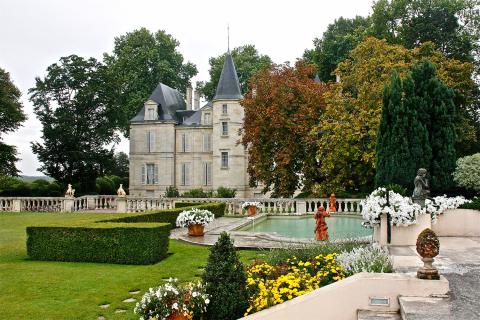The brilliant, opulent, fleshy 2003 Pichon Lalande (65% Cabernet Sauvignon, 31% Merlot, and 4% Petit Verdot) possesses a high pH of 3.8 as well as 13% alcohol. Reminiscent of the 1982 Pichon Lalande (which never shut down and continues to go from strength to strength), the dense plum/purple-colored 2003 offers gorgeous aromas of blackberries, plum liqueur, sweet cherries, smoke, and melted licorice. Fleshy, full-bodied, and intense, displaying a seamless integration of wood, acidity, tannin, and alcohol, this beauty can be drunk now or cellared for 20 years or more.
2003 Chateau Pichon Longueville Comtesse de Lalande, Pauillac, France 750ml
2003 Chateau Pichon Longueville Comtesse de Lalande, Pauillac, France 750ml
2003 Chateau Pichon Longueville Comtesse de Lalande, Pauillac, France 750ml
2003 Chateau Pichon Longueville Comtesse de Lalande, Pauillac, France 750ml
$165.00
$175.00
Vintage
Producer
Grape/Blend
Pairing
Beef and Venison

Tasting notes
Good deep red. Flamboyantly expressive aromas of raspberry, currant, earth, smoked meat, chocolate and pepper. Fat, full and voluptuous yet somehow light on its feet. This has a texture of liquid velvet. Wonderfully opulent wine with considerable inner-palate flavor complexity: raspberry, game, leather, mocha and chocolate. Finishes with very fine-grained tannins that coat the entire palate. A wonderful success for the year, and a wine that can be enjoyed already, even if its sheer material promises 15 to 20 years of life in bottle.
Tasted blind at Farr Vintner?s Left Bank tasting. An attractive, classic nose with cedar, sous-bois and pine interlacing the ripe black fruit. Very fragrant. The palate is very supple on the entry, rounded texture with fine tannins, blackberry, sandalwood, cigar box and sous-bois. Quintessential Pauillac, although it is very conservative on the finish. Tasted October 2010.
Producer
YOU MAY ALSO LIKE
 $112.002018 Chateau Pichon Longueville Comtesse de Lalande, Pauillac, France 375mlHalf Bottle (375 mL) , 15 units available
$112.002018 Chateau Pichon Longueville Comtesse de Lalande, Pauillac, France 375mlHalf Bottle (375 mL) , 15 units available $195.002020 Chateau Pichon Longueville Comtesse de Lalande, Pauillac, France 750mlStandard Bottle (750 mL) , 78 units available
$195.002020 Chateau Pichon Longueville Comtesse de Lalande, Pauillac, France 750mlStandard Bottle (750 mL) , 78 units available $165.002021 Chateau Pichon Longueville Comtesse de Lalande, Pauillac, France 750mlStandard Bottle (750 mL) , 60 units available
$165.002021 Chateau Pichon Longueville Comtesse de Lalande, Pauillac, France 750mlStandard Bottle (750 mL) , 60 units available
